This article was medically reviewed by Cristian Macau, DDS. Dr. Macau is an oral surgeon, periodontist, and aesthetician at Favero Dental Clinic in London. He received his DDS from Carol Davila University of Medicine in 2015.
There are 11 references cited in this article, which can be found at the bottom of the page.
This article has been viewed 642,203 times.
Whether you don't like the flavor of commercial toothpaste, or are looking for little ways to cut expenses, making toothpaste can be a fun project for anyone who's into making their own stuff. Plus, you can avoid many of the artificial ingredients contained in commercial toothpaste, such as sweeteners (usually saccharin), emulsifiers, preservatives, and artificial flavors.
Steps
Making Toothpaste with Sea Salt
-
1Collect your ingredients. For this recipe, you will need 2/3 cup of baking soda, 1 teaspoon fine sea salt, 1 to 2 teaspoons peppermint extract or other essential oil, and filtered water.[1]
- Sodium bicarbonate (commonly known as baking soda) polishes the teeth and eliminates bad breath eliminating acids and creating an alkaline pH. Another great advantage is that it is relatively inexpensive.[2]
- Salt acts as an abrasive that helps remove plaque. It also causes you to salivate, and saliva is nature’s method of protecting teeth.[3] It also provides minerals that help protect your enamel, and this effect is increased when combined with baking soda.
- The essential oil is for taste.
- The water is for consistency.
-
2Mix together 2/3 cup baking soda and 1 teaspoon sea salt. Make sure that the sea salt is mixed thoroughly with the baking soda. When you look closely at the mixture, you should not see clumps of sea salt among the baking soda, but rather the salt should be dispersed so that it is difficult to pick out from the baking soda.
- This can be accomplished using a fork or whisk, which will help break up any clumps of salt. Leaving big clumps of sea salt can be harmful when brushing, so make sure to mix everything together until it is the same consistency.
Advertisement -
3Add in a few drops of the essential oil of your choice.[4] Many people will choose peppermint or spearmint, since it is what they are used to. However, you can try other “flavors” too.
- Other essential oils commonly used include: lavender, which has shown to provide calming effects when used orally; orange, which has also been shown to reduce anxiety; and eucalyptus, which has antiseptic and antibacterial properties.[5] [6] [7] These are all also used in dentistry for similar effects.
-
4Begin mixing in the water. Do this a few drops at a time, and stir well after each addition.[8] You can make it as thick or thin as you like, but be aware that if it is too thin it will be difficult to keep it on the brush and it will get diluted faster by the saliva, making it difficult to brush your teeth.
-
5Store the toothpaste in a glass jar. Essential oils should be stored in glass containers, so this is especially important if you have chosen to include oil. Store the paste near your toothbrush, out of direct sunlight in a cool dry place.[9]
-
6Scoop a bit onto your brush. You can dip your brush right into the paste if you wish, or you can use a small spoon to heap it onto your brush. Experiment with using different amounts. Start with a pea-sized drop, and add more if you don’t feel it is enough.
Making Toothpaste with Coconut Oil
-
1Collect your ingredients. For this recipe, you will need equal parts coconut oil and baking soda depending on how much you want to make. For example, you can start with 6 tablespoons of coconut oil and 6 tablespoons of baking soda. Essential oil to taste. Stevia if you wish, to add a bit of sweetness.
- Coconut oil is believed to be effective against fighting a big cause of tooth decay, Streptococcus mutans, which is a bacterium that lives on sugar and also clings to teeth creating cavities.[10] Coconut oil is supposed to pull all the bacteria away from your teeth, similar to how mouthwash works.
- Stevia is a natural sweetener that comes from a plant of the same name. It has antibacterial properties that are believed to fight against tooth decay.[11]
-
2Begin by stirring together the coconut oil and baking soda. Mix them together until the baking soda and oil are thoroughly incorporated. This means that you will have a mixture that is a moist glob of coconut oil and baking soda. For this task, it is probably best to use a whisk, but a fork can work as well.
-
3Add a few drops of essential oil at a time. Stir well after each addition, and put a tiny amount on your tongue to taste it.
-
4Add Stevia for sweetness, if desired. If you want to make the toothpaste a bit more palatable, add a few drops of Stevia at a time and stir well. Then, repeat the process of tasting a small amount before adding more. It will take at least half an hour for the substance to dissolve completely, so make sure you don't add too much. Stevia is known to be sweeter than processed sugar, so be careful! You don't want your paste to be too sweet! [12]
-
5Store the toothpaste in a glass jar. Essential oils should be stored in glass containers, so this is especially important if you have chosen to include oil. Store the paste near your toothbrush, out of direct sunlight in a cool dry place.[13]
-
6Scoop a bit onto your brush. You can dip your brush right into the paste if you wish, or you can use a small spoon to heap it directly on the brush. Experiment with using different amounts. Start with a pea-sized drop, and add more if you don’t feel it is enough.
Making Tooth Powder
-
1Collect your ingredients. For this powder, you will only need three parts baking soda, one part salt, and a few drops of essential oil (optional).[14]
- Be aware that this is a powder, not a paste. If you prefer a paste, choose one of the other recipes, or add a bit of filtered water to the powder. However, also understand that in terms of effectiveness, there is no difference between them.
- A part can mean whatever amount you want it to mean, what is important is the ratio. For example, if you use 3 tablespoons of baking soda, you will then use 1 tablespoon of salt. If you use 6 tablespoons of baking soda, you will use 2 tablespoons of salt for an increased whitening effect. For a better taste, you can also add a few drops of lemon juice.
-
2Mix the baking soda and salt.[15] You can do this by stirring them together or by putting them in a sealable container and then shaking vigorously.
- The shaking method may be better for making sure the two ingredients are well mixed.
-
3Add in essential oil.[16] If you wish to add essential oil for flavor, you can do this now. Add a few drops of your favorite to the powder and stir or shake thoroughly.
-
4Store your powder. If you added essential oil, you should store the powder in a glass jar. If you didn’t, you can store it in a plastic bag or a plastic or glass container. Either way, make sure you store it in a cool, dry place away from direct sunlight.
-
5Use your powder. You can wet your brush in the sink and then dip it into the powder until you have a generous layer on your brush, or you can do it without water. If you wish to do this, simply put some of the powder on the brush (without wetting it first) or in your mouth and brush normally for two minutes.
- Experiment with and without water to see which method you prefer.
Expert Q&A
-
QuestionHow do I make toothpaste using kamias extract?
 Cristian Macau, DDSDr. Macau is an oral surgeon, periodontist, and aesthetician at Favero Dental Clinic in London. He received his DDS from Carol Davila University of Medicine in 2015.
Cristian Macau, DDSDr. Macau is an oral surgeon, periodontist, and aesthetician at Favero Dental Clinic in London. He received his DDS from Carol Davila University of Medicine in 2015.
Doctor of Dental Surgery Kamias extract should be used the same as any other oil in the recipes described in this article. Make sure you do not use too much of the extract and create a product with a bad taste. Kamias extract has a good concentration of calcium, which is helpful in remineralization and enamel protection.
Kamias extract should be used the same as any other oil in the recipes described in this article. Make sure you do not use too much of the extract and create a product with a bad taste. Kamias extract has a good concentration of calcium, which is helpful in remineralization and enamel protection. -
QuestionWhat if I don't put salt into the toothpaste?
 Cristian Macau, DDSDr. Macau is an oral surgeon, periodontist, and aesthetician at Favero Dental Clinic in London. He received his DDS from Carol Davila University of Medicine in 2015.
Cristian Macau, DDSDr. Macau is an oral surgeon, periodontist, and aesthetician at Favero Dental Clinic in London. He received his DDS from Carol Davila University of Medicine in 2015.
Doctor of Dental Surgery The paste will be less abrasive which is good but it will have less minerals which can help the enamel remineralization if they come in a bigger quantity. Salt will also help to stimulate the salivary flow. In some cases, salt can cause gums to swell so do not use it if you experience this.
The paste will be less abrasive which is good but it will have less minerals which can help the enamel remineralization if they come in a bigger quantity. Salt will also help to stimulate the salivary flow. In some cases, salt can cause gums to swell so do not use it if you experience this.
Warnings
- Do not eat toothpaste for any reason. Try to avoid swallowing it too, if possible. The small amount used for brushing is not usually harmful when accidentally swallowed, unless you are extremely sodium sensitive.⧼thumbs_response⧽
- Toothpaste without fluoride may not protect enamel as well as toothpaste with fluoride, nor does it provide re-mineralization of decayed teeth. Consult with your dentist before switching yourself or your children.⧼thumbs_response⧽
- Before you start using this type of toothpaste, you should consult with your dentist and check if your teeth are fit to endure the abrasive mix of salt and baking soda. If you have enamel defects, then you will not be able to use this type of toothpaste and fluoride toothpaste is a better option.⧼thumbs_response⧽
- Baking soda and hydrogen is a healthy alternative to fluoride for some, as long as you don't eat a ton of candy every day making your own toothpaste is a better choice.⧼thumbs_response⧽
- If you have a lot of metal in your mouth (e.g. braces, permanent retainers, metal fillings) avoid using salt in your toothpaste as it may corrode the metal.[18]⧼thumbs_response⧽
- If you come across a recipe that includes glycerin, consider substituting it with something such as xylitol. Some believe that glycerin creates a residue on the surface of your teeth that prevents remineralization and is difficult to remove.⧼thumbs_response⧽
- Children who use, and regularly swallow toothpaste containing fluoride are at risk of developing fluorosis.[19]⧼thumbs_response⧽
Things You'll Need
- Baking soda
- Filtered water
- Mixing bowl
- Measuring spoon
- Glass or plastic jar for storing
- Toothbrush
- Essential oil (optional)
- Coconut oil (optional)
- Finely ground sea salt (optional)
References
- ↑ https://www.iamcountryside.com/self-reliance/diy-baking-soda-toothpaste-recipe/
- ↑ http://www.md-health.com/Brushing-Teeth-With-Baking-Soda.html
- ↑ http://www.healingteethnaturally.com/toothpaste-alternatives.html
- ↑ https://www.iamcountryside.com/self-reliance/diy-baking-soda-toothpaste-recipe/
- ↑ http://www.ncbi.nlm.nih.gov/pmc/articles/PMC4109163/
- ↑ http://www.ncbi.nlm.nih.gov/pmc/articles/PMC4109163/
- ↑ http://www.healingteethnaturally.com/essential-oils-for-oral-care-and-healing-of-gums.html
- ↑ https://www.iamcountryside.com/self-reliance/diy-baking-soda-toothpaste-recipe/
- ↑ https://www.iamcountryside.com/self-reliance/diy-baking-soda-toothpaste-recipe/
- ↑ http://www.dailymail.co.uk/health/article-2197389/Ditch-minty-toothpaste-try-coconut-oil-instead-Fruit-kill-bug-tooth-decay.html
- ↑ http://www.homeremediesweb.com/stevia-health-benefits.php
- ↑ http://www.homeremediesweb.com/stevia-health-benefits.php
- ↑ https://www.wholeheartedeats.com/simple-homemade-toothpaste-youll-never-html/
- ↑ https://www.food.com/recipe/homemade-tooth-powder-67719
- ↑ https://www.food.com/recipe/homemade-tooth-powder-67719
- ↑ https://www.food.com/recipe/homemade-tooth-powder-67719
- ↑ http://news.bbc.co.uk/1/hi/health/6979976.stm
- ↑ http://www.healingteethnaturally.com/toothpaste-alternatives.html
- ↑ http://www.webmd.com/children/fluorosis-symptoms-causes-treatments#2
About This Article
To make your own toothpaste, mix 1 teaspoon (6 g) of baking soda with a splash of water to form a paste. Add drops of peppermint essential oil if you want your toothpaste to be flavored. Then, dip your toothbrush in the paste and gently brush your teeth. The baking soda works as a gentle abrasive that helps kill germs. Keep in mind that homemade toothpastes don’t contain fluoride. Fluoride prevents cavities and strengthens tooth enamel, which is why dentists recommend brushing your teeth with fluoride toothpaste. Also, since baking soda is abrasive, it could wear down your tooth enamel if you brush with it too much. Talk to your dentist about whether homemade toothpaste is right for you. For tips from our Dental reviewer, including how to make tooth powder and toothpaste with sea salt, read on!

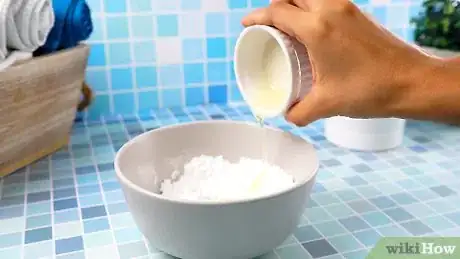

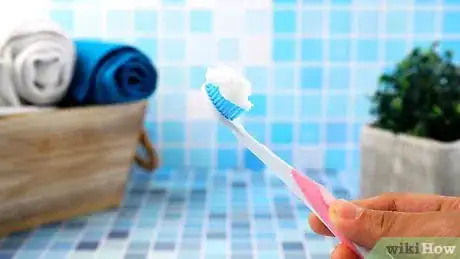
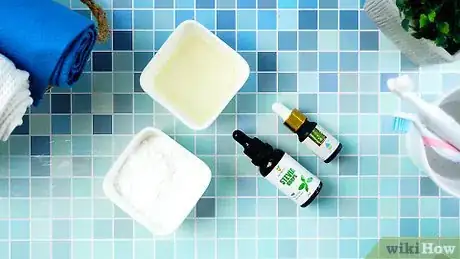
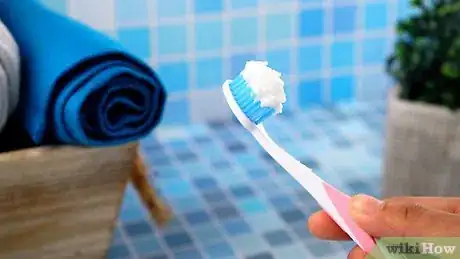

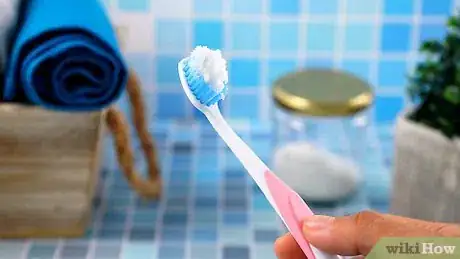

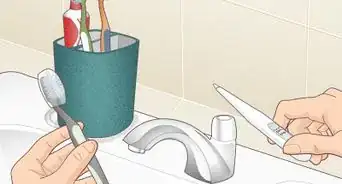
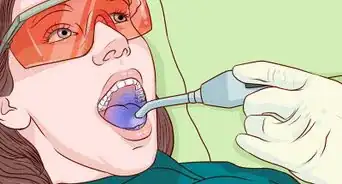




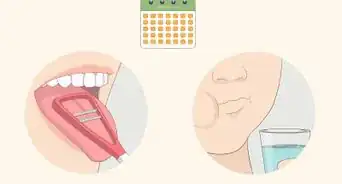


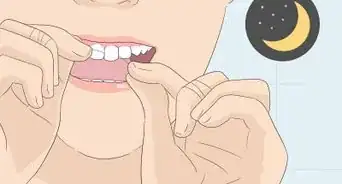
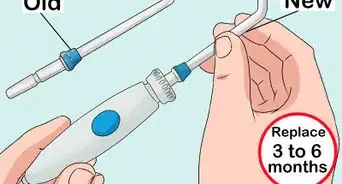
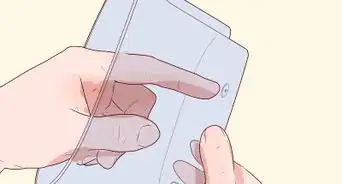









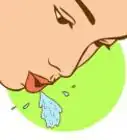
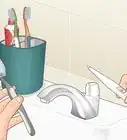
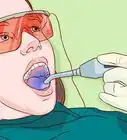




































Medical Disclaimer
The content of this article is not intended to be a substitute for professional medical advice, examination, diagnosis, or treatment. You should always contact your doctor or other qualified healthcare professional before starting, changing, or stopping any kind of health treatment.
Read More...